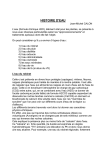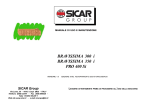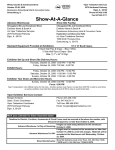Download Nov. 2010 - Genesee Region Orchid Society
Transcript
Vol. 32, No. 3 - November, 2010 Genesee Region Orchid Society, Inc. http://www.geneseeorchid.org NEXT MEETING: MONDAY, NOV. 8 , 2010 “Orchids 101” 6:00 p.m a Social “Hour” 7:00 - 7:15 p.m. a Meeting begins at 7:15 p.m. Senior Lounge, Jewish Community Center, 1200 Edgewood Ave., Rochester, NY T hings are finally beginning to quiet down. The phone has virtually stopped ringing as the army of robocallers packs up its bags and heads off to who-knows-where. The morning glories have frozen, and the dahlias are looking poorly as they await their long winter’s nap in a paper sack in the basement. Restrepia aristulifera Photo © Duane Erdmann But our orchid season is in full stride! November brings Dr. Duane Erdmann to our meeting with a discussion of “Restrepias.” Duane and his wife Judy began growing orchids in Rochester in 1974. First, the collection was under lights in their basement, and later they moved it to a small greenhouse. Over the years, they moved five times and built 5 greenhouses – each one a little bigger. Their current greenhouse is 18' × 24' off their garage in Kennett Square, Pennsylvania. The Erdmanns still grow under lights in the basement, too – the little things and those that like moderated temperatures. Paphiopedilum still remain their main focus, but in more recent years Duane has moved over to the small side – Restrepias. Duane is a retired chemist. His favorite “thing” about orchids is photographing them. In recent years, he has taken trips to Ecuador to see orchids in their natural settings and to do more detailed studies of specific species. He and Judy both share a passion for some of the more exotic species and successfully “do it all” when it comes to growing - greenhouse, windowsill and under lights. Duane Erdmann will take us behind the scenes to see just how easy it can be for growers of all kinds to add a Restrepia or two to their collections. He will also share thoughts on taxonomy and classification efforts to date, having more than 30 different identified Restrepia species and a dozen more unknowns in his collection. He has had the opportunity to study and photograph them in situ which will add conviction and depth to his talk. Join us with an open mind and a desire IN THIS ISSUE: to expand your collection. Duane will not have plants for sale at the meeting; members are welcome to bring their own plants to sell. We’ll be taking Duane out to dinner on Monday prior to the meeting at Applebee’s Neighborhood Grille, 3349 Monroe Ave, Rochester. If you’d like to join us (everyone pays for his or her own dinner), please email Carol Butcher - ASAP. The Show Table will be back, so please don’t forget your flowering plants. We’ll see you there! Meeting Minutes Show Table Orchid Photography Treasurer's Report D2 D2 D3 D4 2 Meeting Minutes for Monday, Oct. 5, 2010 President Paul Batz called the meeting to order at 7:15 p.m. Paul welcomed members and guests. A motion was made by Suzanne Flanders to accept the September meeting minutes. A second was made by Natalie Auburn. A vote was taken and the minutes were accepted. Ron Uhlig, treasurer, gave the financial report for the past month. Beginning balance was $14,725.57. Ending balance as tonight’s meeting stands at $14,112.86. A question was posed about the audit. Jeremy Bechelli, Member at Large, will draft a letter in summary of the audit, to be presented at the next meeting. A motion was made by Susie Meyers to pass the financial report. A second was made by Anna Greene. A vote was taken and the treasurer’s report was accepted. Paul announced that articles are needed for the Newsletter. Anyone wishing to submit an article should send it to our webmaster, Phil Matt. Phil added that there is no limit to number of articles or content size since it is an electronic newsletter. A clipboard was sent around to sign up to bring in refreshments for our upcoming orchid meetings. Regarding the upcoming spring Show, Paul said that a Chairperson is still needed. The board has decided to break down the responsibilities of the Show into working parts. He encouraged the membership to be willing to accept if asked to do a part in the show. It was also decided by the executive board that our society will not be participating in Gardenscape in the spring of 2011. There was not enough response by the public in attending our orchid show to offset the work and expense involved in setting up and staffing this event. Phil Matt brought in hard copies of the 20102011 Members List for anyone wishing to have one. (to page 5) OCTOBER SHOW TABLE Cypripedium Alliance Paph. tonsum Paph. Doll’s Kobold (charlesworthii × henryanum) Fleischman Hober Cattleya Alliance C. Pink Elf (Mini Purple × loddigesii) Ctt. La Selva (Gur. bowringiana × C. Bonanza [Bracey]) Rlc. Sweet Norma (Odom’s Sweetheart × Lawless Freischütz) Ctt. Sagarik Wax ‘Silk Ball’ (C. Summerland Girl × Chocolate Drop) Batz ? Bardun " Vandaceous V. Robert’s Delight (Kasem’s Delight × Madame Rattana) Prra. Motes Leprechaun (V. Paki × Luke Thai) Pps. Sunny × Chri. vietnamica Phal. lueddemanniana V. Pachara Delight (Karulea × Gordon Dillon) Uhlig Batz Matt Myers Pfromm Oncidium Alliance (Tolu. Wave Dancer × Robsan) × Rrm. Sycamore Hollow Orpha. radicans “Odcdm.” Dark Horse (Ctd. Roger Cole × Odm. povedanum)* Brs. Eternal Wind (Bracdiana × Rex) Uhlig " Batz Butcher Miscellaneous Pna. Majestic (cristata ×herrerae) Aslla. africana Uhlig Batz *Sometimes there is a delay between the time a new genus is entered and offspring genera are renamed. If there are any names you have questions about, don’t hesitate to call or e-mail me. Please note especially all names and abbreviations in boldface, and correct or complete your records. Once the parents are printed, kindly include them the next time you show the plant. - Iris Cohen 315-461-9226 For Sale! Hydro Farm Grow Light with 400 Watt High pressure Sodium bulb-exterior ballast. Suitable for damp locations. 4 humidity trays and a light intensity meter. $125 or best offer. Lorraine Kuipers 585-381-9514. 3 Photographing your Orchids Photographing your orchids ranks right up there with photographing your kids. It’s something you just need to have to show to the friends at work, school or church. After all, it only takes nine months to make a baby, but you may have been nurturing your orchid for several years before it decides to reward you with a bloom or two, so you have a right to brag about it. that’s about a foot wide. If your orchid flower is a couple inches across, all you’ll see is a little splash of color. So you need to become familiar with your camera’s close up or macro mode and use it to zoom in on the flower. Here are the steps to a good picture: Don’t use the camera’s flash. Read the manual, if necessary, and figure out how to turn it But, I hear you saying, I could never take pictures with my point and shoot digital camera that come close to the quality of those that show up in magazines like Orchids and Orchids Digest. Well, I’m here to say that you can do a fairly good job with a few simple steps. The second level assumes you’ve got a slightly more advanced point and shoot or an SLR, that you’re willing to wade through the menus to figure out how to use the manual exposure mode, and that you have a piece of black cloth and perhaps even a tripod. You’re willing to invest a little time in order to get a better quality picture. There’s a third level that involves a little fancier setup with a couple remote flash units, trigger mechanisms and light diffusers. I’m going to assume that if you have this stuff, you know how to use it. The Impatient Shooter I might have called this the quick and dirty level, but I’m sure you still want a good quality picture. The biggest requirement here is that you have a camera that has a macro or close up mode. In the normal mode, most cameras probably cannot focus on objects closer than about two or three feet away. That means that you’re going take a picture that covers an area Take several pictures The lingering habits of using film and processing (which cost money) shouldn’t prevent you from making some more digital exposures. Snap away! Digital pictures are free, so take several exposures. Keep track of the flower’s name This is really important. A year from now, the picture will be practically worthless if you don’t know the name. I like to do this by taking a picture of the label after I’ve photographed the flower. In addition, it’s good to have a record in case you need help identifying it, you lose the label or just to compare this blooming with the previous one. We can talk about two levels of orchid photography. The first assumes you’ve got a basic point and shoot camera and that’s about it. No fancy equipment and not much patience. Let’s call him or her the Impatient Shooter. Hold the camera as still as you can Without a flash, you’ll have a longer exposure time. A tripod will help. As soon as possible, download the pictures to your computer. off. Otherwise, leave the camera in the automatic mode of operation. Lighting the flower is very important Take the photo with as big a window as you can find to your back. This will give you nice diffuse daylight to illuminate your flower. Select a non-distracting background This is sometimes hard. A bunch of green leaves from other plants makes a good background. A piece of gray cloth is also a good choice. You probably won’t have good luck with either black cloth, white cloth, or a strong color. It’ll throw off the exposure and your orchid will be too light or too dark. If you want a black background, move to the next section. Select the best flower on the plant You want one that’s flat, symmetrical and doesn’t have any cuts, tears, or spots. Almost always, once you start looking, you’ll find that some blossoms are better than others. Pick the best one and zoom in on it. Also, it’s a good idea to try and pick a flower that’s not covered up by another flower. Tilt the plant or the camera Until the flower is straight in the viewfinder. Look at the pictures and decide if any of them are what you’re looking for. If not, now’s the time to go back and reshoot. Not tomorrow. Not next week. Right now. Delete all of the pictures except the best one. This is really hard for most people, but it’s really important if you want a useful set of pictures. Those inferior shots just cause digital clutter, so delete them. Go to the picture that you took of the label. Remember it or write it down. Go back to the one picture you liked best and rename it to the name of the flower. A year from now are you going to remember that DSC2013.jpg was Phal. Baldan’s Kaleidoscope? So, even though you’re the “Impatient shooter,” take the time to change the name. You might ask, what software should you use for all this manipulating of your images? There are many choices. I’m really fond of a package called ACDSee, but most cameras come with some sort of photo album software. Most computers are also delivered with basic photo album/editing software as part of the operating system. Pick a software package and learn how to use it. (to next page) 4 (from previous page) The Pro-Wannabee Shooter era’s monitor, which is relatively small. Don’t forget to rename the picture. loaded the picture to your computer. You might have to do a little crop- A gray background is good and provides a fairly accurate representation of the flower, but I’ve noticed that most orchid pictures in magazines have a black background. And I don’t mean a dark background, I’m talking about pure black. How do we do that? First you need something that’s really black for the background. Black velvet or velour is the best. I was lucky to find some very black velvet in a local fabric store a few years ago. You might also try looking on the web. Get a piece that is at least 4 ft. x 6 ft. Buy or build some sort of frame that you can hang it over as well as allow it to drape over the table top that you’re using. In general, follow the same steps to take the picture as above: use diffuse light from in back of you, select the best flower and zoom in to get the flower to fill the picture. Clo. Jumbo Lace ‘SVO’ × Ctsm. Frilly Doris ‘SVO’ HCC/AOS Photo ©Ron Uhlig Using the auto exposure mode on your camera with a black background probably won’t work. I’m betting the orchid will come out too light. Rather set the camera to manual exposure mode. Set the aperture to a fairly high value, like f/11 or f/16. The higher f-number gives you greater depth of field, which means that it’s most likely that all of the flower will be in focus. This is especially important when shooting in the macro mode, which you will be most of the time. Next steps The biggest task in setting up the photo of your orchid is lighting. The camera flash is a no-no. Big windows in back of you are good, and should be used when available. But what can you do at night or in the winter in Rochester, or in a room such as the basement that doesn’t have a good window? I’ve had good luck with two simple clamp-on lights with aluminum reflectors. These are less than $10 each at Lowes or Home Depot. Stick in a 100 watt light bulb and you’re good to go. ping and could possibly remove, using the clone feature of your software, a blemish or two, as needed. Now that you’ve set the aperture, shoot a series of pictures with different exposure times. Start at 1/10th of a second. Check out the picture on the monitor and if it’s too dark, increase the exposure time by one notch to, say, 1/5th second. If it’s still dark, increase the exposure time by one more notch and then take another photo. Continue this until the picture is obviously too light. It may take five or ten photos or even more. This practice is called bracketing and is worth the effort. However, it is important that you set the white balance on your camera properly. The wrong white balance will give your picture an overall bluish or yellowish cast. You may not notice it if the background is black, but it will affect the color of the blossom. If you’re using old fashioned tungsten light bulbs, set the white balance to tungsten. This may also require a little reading of the User’s Manual. - Ron Uhlig GROS Treasurer Director of Special Ops This is also where you need a tripod. Any hand-held exposure time less than 1/30th of a second will likely be blurry. Otherwise, your steps are the same as above. Most importantly, follow the steps to look at the pictures on your computer and delete all but the best one. It’s better to make the final decision on your computer, not on the cam- You’ll want to set up the lights with one light on each side of the flower, at the same level as the camera. One more advantage of a black background is that you don’t have worry about shadows on the background. Use any other color and you’ll probably have to fiddle with the lights to eliminate the shadows. If you have a good flower, a good background and good lighting, there won’t be a need for much, if any, editing after you’ve down One final word. You’ll be tempted to go for the artistic version of your flower pictures. One of the most common is to zoom in on the lip and column a little bit from the side and tipped a little. But, there’s something to be said for a nice straight-on shot, showing the entire flower. It provides the best documentation of the flower. coming Dec. 6: The GROS Auction! 5 Treasurer’s Report for September, 2010 Sep 2010 Treasurer's Report (presented at Oct meeting) Income Details Raffle Dues 49.00 195.00 Total 244.00 Expense Details Speaker's Fee for Sep mtg Supplies for Orchids 101 mtg Library supplies Office supplies Insurance Raffle Plants Auctions Plants Total Previous Balance Changes Current Balance 9/1/2010 9/30/2010 441.20 60.00 45.06 35.45 100.00 100.00 75.00 856.71 Income Expenses 244.00 856.71 Total 14,725.57 14,112.86 Minutes, from p.2 The Syracuse (Central New York Orchid Society) Orchid Show was held the previous weekend (Oct. 2 & 3). Paul Batz gathered orchids from members for the show and set up our society exhibit at the show. Kathy Kluge took down the exhibit on Sunday afternoon. Plants exhibited at the show were on the show table tonight. Several received ribbons. Results will be published in the November newsletter. Our November speaker, Dr. Dwaine Erdman, will not be selling plants. Therefore, members will be able to sell plants at the meeting if they would like. Program Chairperson Carol Butcher introduced our speaker, Bill Thoms, who gave us a humorous and enlightening presentation on Bulbophyllums. Thanks go to Carol Butcher for housing Bill this month. After the raffle, the show table was presented by Paul Batz and Kim Hober. The meeting was adjourned at 9:15. Respectfully submitted by Sandi Uhlig Secretary Restrepia sanguinea ‘Walter’, AM/AOS - Photo © Ron Uhlig Grower: Sandi Uhlig The Orchid Collection is a publication of the Genesee Region Orchid Society. It is published ten times per year for our members. Single membership is $20.00, family membership is $25.00 annually. Dues should be sent to the GROS at P.O. Box 20606, Rochester, N.Y. 14602 Phil Matt, Editor. P.O. Box 10406, Rochester, N.Y. 14610 The Editor receives e-mail at 6 Genesee Region Orchid Society Officers 2010-2011 President Executive VP Program VP Treasurer Secretary Member at Large Paul Batz Kim Hober Carol Butcher Ron Uhlig Sandi Uhlig Jeremy Bechelli 356-0999 [email protected] 383-1994 [email protected] [email protected] 387-9940 [email protected] 387-9940 [email protected] 339-8631 [email protected] The Genesee Region Orchid Society (GROS) meets every month from September through May at the Jewish Community Center, 1200 Edgewood Avenue, Rochester, NY, on the first Monday following the first Sunday of each month. (Dates sometimes vary due to holidays, etc.) The GROS is an Affiliate of The American Orchid Society and of The Orchid Digest Corporation. Material in our newsletter, The Orchid Collection, may be freely reprinted in other orchid society publications with proper attribution. Copyrighted illustrations, photographs or articles may not be reprinted without the express written permission of the artist or author. GROS Committee Chairpersons 2010-2011 AOS Rep. Dave Weiss Auction Jeff Snyder Education Jeremy Bechelli Community Outreach Librarian Mariko Pollock Monroe Cty. Liaison Jeremy Bechelli David Hayes Newsletter Phil Matt Nominating ODC Rep. Alan Salzman Property (Exec. VP) Raffle Jeff Snyder Show Social Lorri Bayer Sonnenberg Liaison Fran Murphy Special Ops Ron Uhlig Webmaster Phil Matt 544-3561 377-5895 339-8531 <open> 442-6527 339-8631 872-0112 288-7025 <open> 377-3213 [email protected] [email protected] [email protected] [email protected] [email protected] [email protected] [email protected] 377-3595 <open> 288-5014 924-7763 387-9940 [email protected] 288-7025 [email protected] Auction ‘10 Monday NIGHT Dec. 6, 2010 Details on the GROS Website soon!







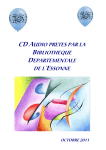


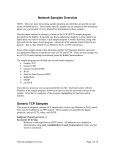


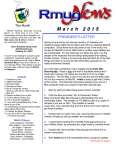
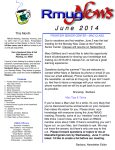
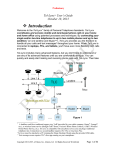



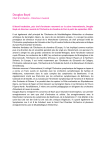


![WCC-700 Service Manual [ 058047 ]](http://vs1.manualzilla.com/store/data/006032662_1-9beff2067bf07b85dc4c0d9ee1d42eb7-150x150.png)
